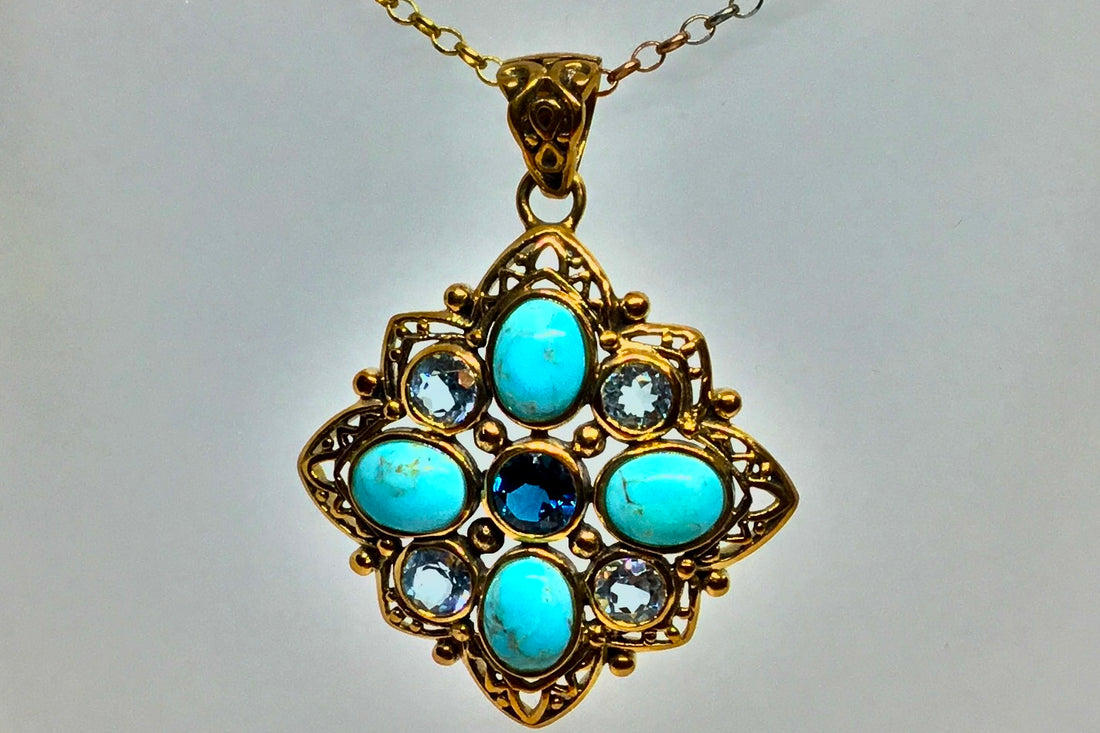
The Alluring and Vibrant World of Turquoise

Human beings are naturally drawn to the beautiful items that Earth produces. Crystals, gemstones, and fossilized rocks are among those natural gifts that Mother Nature makes available for our beautification and enjoyment.
Turquoise is a captivating gemstone known for its unique colour and fascinating history. Let's delve into the qualities that make this stone so special.
What gives turquoise its distinctive colour?
The striking blue-green hue of turquoise is due to the presence of copper within the stone. The intensity of the colour can vary depending on the amount of copper present, with deeper shades indicating higher copper content.
How does turquoise form?
Turquoise forms in dry, arid regions where water interacts with copper deposits in the ground. Over time, this interaction leads to the creation of turquoise nuggets or veins within the surrounding rock.
What are the metaphysical properties of turquoise?
Known as a stone of protection, turquoise is believed to ward off negative energy and promote inner calmness. It is also associated with enhancing communication skills and fostering creativity.
What are the cultural significances of turquoise?
Throughout history, turquoise has been revered by various cultures for its beauty and perceived healing properties and has been considered to be a sacred stone with spiritual significance.
How can turquoise be used in jewellery?
Due to its vibrant colour and relative softness, turquoise is a popular choice for jewellery-making. It is often set in silver to enhance its natural beauty and can be found in a variety of jewellery pieces, from rings to necklaces.
Overall, the turquoise stone's unique colour, formation process, metaphysical properties, cultural significance, and versatility in jewellery make it a truly remarkable gemstone with a rich history and enduring appeal.